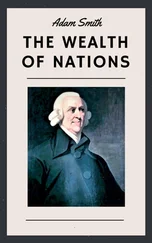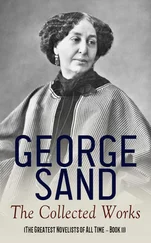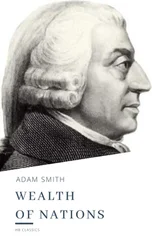It is worth drawing out a couple of the observations that Smith makes here as they allow us to understand why he presents his ideas in the way that he does. His main concern is with clarity of expression, what he calls ‘perspicuity’. 31Writers should avoid jargon and overwrought or flowery prose; they should stick to short sentences and write in as plain a style as possible. This is particularly the case in philosophy and in historical and didactic writing. Smith’s reason for this is related to the account of how we develop beliefs in the Astronomy , but it is also crucially related to the account of the moral sentiments, to which we will turn in the next chapter.
It is worth quoting Smith’s account of a successful literary style here as it will help us to understand why he constructs his books in the way that he does.
When the sentiment of the speaker is expressed in a neat, clear, plain and clever manner, and the passion or affection he is possessed of and intends, by sympathy , to communicate to his hearer, is plainly and cleverly hit off, then and then only the expression has all the force and beauty that language can give it. 32
Smith’s view on simplicity of expression rather than the use of figures of speech or literary techniques represents a shift in literary style that would gain strength through the eighteenth and nineteenth centuries as history and philosophy sought to distance themselves from rhetoric. For Smith, the expert will seek to convey his knowledge rather than obscure it. As he puts it: ‘One who has such a complete knowledge of what he treats will naturally arrange it in the most proper order.’ 33Facts should be clearly stated, narratives straightforwardly related, and arguments arranged in a gapless fashion around a simple core principle. Perspicuous writing arranges the expression of ideas in their ‘natural’ order and allows the reader’s mind to flow seamlessly along with the text. The use of literary effects, metaphors, and allusions must be kept to a minimum and judged only by their success in illustrating the ideas for the reader. Overly florid prose was anathema to Smith and forms the basis of his criticism of writers such as Lord Shaftesbury (1671–1713) and Joseph Addison (1672–1719).
Writing with perspicuity meant writing in short, clear sentences whose aim was to convey ideas rather than show off literary skill. Smith believed that this was a relatively recent phenomenon. Prose was a product of ‘commerce and opulence’, 34of a society where facts needed to be stated and understood. No one, as Smith pointed out, ever made a bargain in verse. 35The obsession with clearly conveying ideas runs through his discussion of the different styles of writing and argument in the rest of the lectures. His favoured style was plain, simple, and clear – though one may wonder at the extent to which his published writings actually lived up to this ideal.
Most significantly for our interests, this view on style shapes Smith’s views on how historians should write about the past. Smith distinguishes between two broad styles of argument: the didactic and the rhetorical. The didactic focuses on proving a proposition by weighing the evidence, while the rhetorical takes sides and seeks to prove a proposition by literary affect. Neither of these is appropriate for writers of history. Historians should adopt the narrative style, where facts are simply related without assessment. They may engage in a critical reflection on their sources in order to determine the accuracy of the facts that they relate, but they should not approach history with a view to ‘proving’ something. The best historians, and Smith here references Thucydides and Tacitus, do something else in addition: their narratives examine historical events in terms of cause and effect. An account that merely describes one thing after another is not an explanation of events. Returning to the argument of the Astronomy , he notes that ‘we are not satisfied when we have a fact told to us which we are at a loss to conceive what it was that brought it about’. 36
This, according to Smith, is the most promising approach to history. He also rejects the ancient habit of meticulously describing the character of particular historical individuals and their psychological condition as explanations for events. These are literary illustrations rather than a clear causal chain of events. Good history provides a chain of events and shows how one leads to the other. As such, the writing of history is like all other writing in Smith’s view: it is best achieved through a gapless narrative with a simple principle that has great explanatory reach in accounting for a particular chain of events. Smith refers to this as the Newtonian method, one which is ‘the most Philosophical’ 37and preferable to Socratic didacticism and Aristotelian teleology.
In order to convince the reader, the core principle needs to be illustrated by a series of immediately recognizable examples. In his lectures on rhetoric, Smith provides us with the two key types of such examples which dominate the rest of his work: the historical case study and the generalized character sketch. 38It is through these two techniques that he demonstrates the plausibility of his theories. The Newtonian ability to connect the apparently unconnected in one chain under one principle is persuasive if the examples used are either from common experience or from detailed empirical cases. Through these techniques, readers are drawn along with the author and find their imagination running smoothly from one observation to the next until the explanatory whole is laid before them.
As we will see in the rest of the book, Smith remains committed to the main principles of the method outlined in this chapter. He was modest about what he expected to be able to learn from his studies and he was very careful to arrange them around a central explanatory principle, and to illustrate them with examples that would carry his reader’s imagination along with him. His aim was to trace cause and effect in history.
Smith saw himself as adopting a self-consciously scientific approach to his subject matter, and in doing this he sits within the mainstream of the Scottish Enlightenment’s application of science to social subjects. The inspiration here was the French philosopher Montesquieu (1689–1755). Montesquieu’s monumental The Spirit of the Laws (1748) represented the first modern attempt to apply something like the scientific and observational method to society as a concept. In doing so, the Frenchman focused on how the ‘spirit’ of the customs, habits, institutions, and morals of different types of society can help us to understand them. The Scots all absorbed this approach and combined it with the natural jurisprudence that Hutcheson had drawn from Pufendorf to develop an approach that was to be more scientific than the available alternatives. The science of man was contrasted with the existing attempts to explain the origin of, and justify obedience to, social institutions. Smith, like Hume, realized that the dominant political factions in Britain, the Tories and the Whigs, had developed social philosophies which served their interests. The Tories developed a theory of passive obedience and divine right that favoured the hereditary monarchy, while the Whigs developed the idea of the social contract that grounded government in the consent of the people. The contract argument had the virtue of providing a basis for rebellion when the terms of the contract had been breached. The classic case of this was John Locke’s Two Treatises of Civil Government (1689), which sought to justify the new British settlement after 1688 in terms of a justified removal of a contract-breaking tyrant, James II, whose supporters in turn deployed arguments about the divinely ordained nature of monarchy and the danger of anarchy. Both of these explanations served a political rather than a scientific agenda.
Читать дальше












